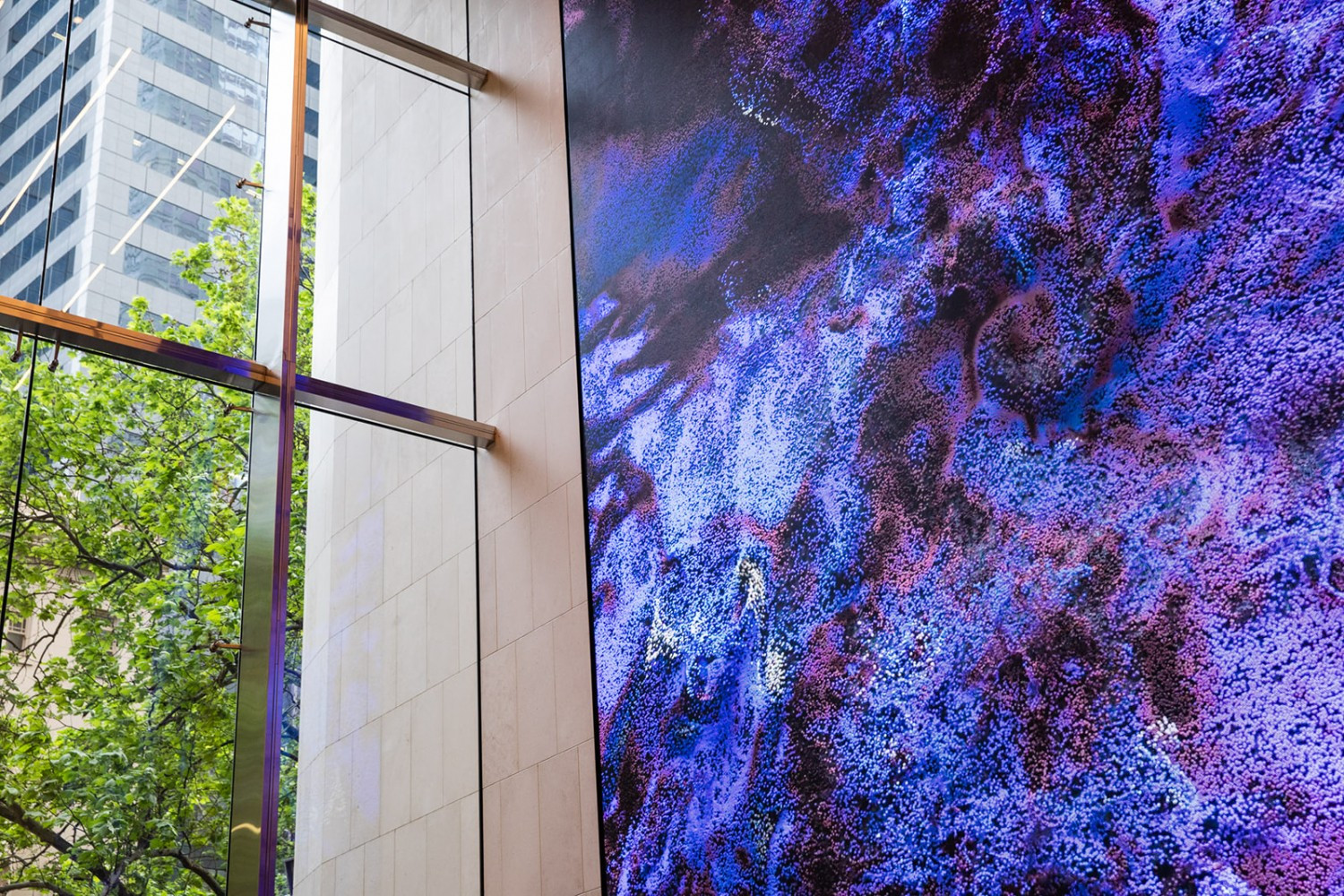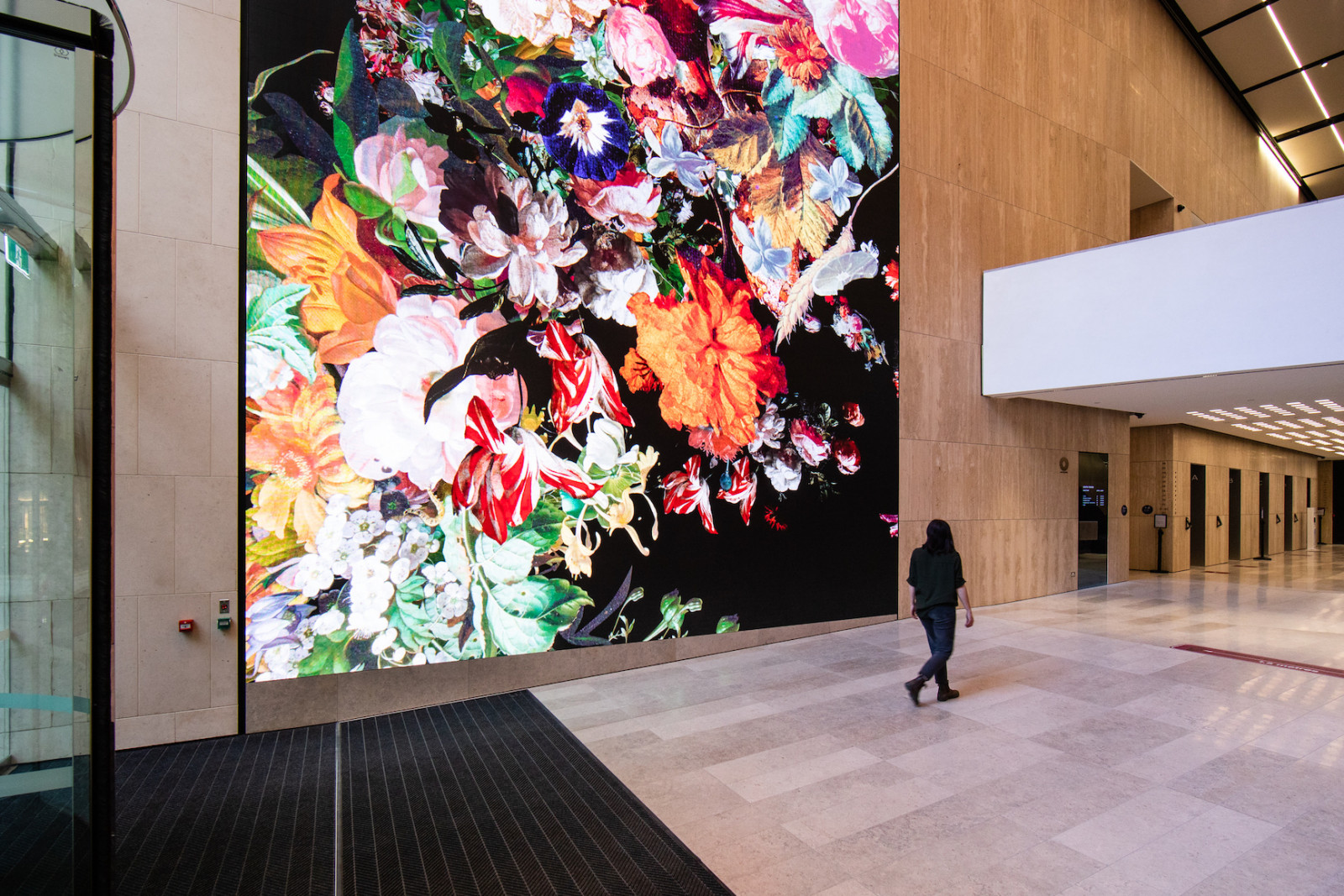
Digital art has the potential to excite, engage and reach more people than ever before. So what does this mean for artists, clients, and collectors alike?
Digital art is becoming increasingly important and prevalent in today’s society. We are finding more businesses, public art installations and art collectors are looking towards the digital as their preferred art choice.
With the growth of NFT’s (or Non-Fungible Token) the value and exchange of digital art is increasing at a rapid pace. Not only this but the rise of social media means that for many artists marketing their artworks, the best way to do this is digitally via video reels, online content creation or some kind of digital platform.
So what does this mean for artists, clients and collectors alike?
Well, the turn to digital is both an exciting opportunity, but equally challenging change for artists.
Lets start with the basics- what is an NFT? An NFT (non-Fungible Token) is a unique collectable token tied to a digital artwork or music that is not exchangeable. This means, unlike cryptocurrency, each NFT has a digital signature that makes it impossible for them to be exchanged for, or equal to one another.
According to a recent report the total value of NFT transactions increased 300% (equivalent of US$250 million dollars) in 2020. Living in a world where the internet can cut, paste, copy and reproduce originals, NFT’s offer a way for artists to be paid for their original work. Original JPEG files are like owning an original oil painting- you pay big bucks for the original, not the copy or knockoff.
Many artists, especially emerging artists, are turning to NFT’s as way of establishing themselves and getting their works out in the world. We are also seeing more and more digital art public displays pop up in cities all over Australia and even corporate collectors looking into investing in digital and using digital platforms.
We spoke to artist, James McGrath, who featured in our digital art project at 80 Collins Street, about his digital art practice. James’s beautifully decadent and masterfully crafted works are inspired by Baroque painting and architecture, as well as Australian fauna and flora. McGrath’s practice in the digital space comes from a combination of his architectural background and painting artistic practise.
James says that the digital space allows him to fully explore what the Baroque period was all about; where image becomes wrapped onto form and where architecture and image merge. His practice involves both painting and digital rendering and he explains how he can’t have one without the other. James says he will often go from one medium to the other and then back again. The juxtapositions between the two methods inform his practice; from paintings precision, intricity and ‘no room for error’, to the digitals mathmacility and easy editable ability, create detailed, thoughtful and highly immersive outcomes.
McGrath is one of the many artists growing in the digital space at the moment. Within the COVID climate we are all learning to navigate, going digital has never been so prevalent, opening up new possibilities for artists, businesses and collectors moving into the digital art space.
For example, Melbourne-based charity the Lighthouse Foundation, which supports youth homelessness, started the campaign, Break the Pattern, asking people to donate money in exchange for a digital screensaver by artists Ken Done and Cassie Byrnes. The screensavers can be used on Zoom, Microsoft Teams, iPhone, and Android phones.
Here we see digital art working towards social change and artists being able to use their art in ways never before explored. You can check out and support the Lighthouse Foundation campaign here
While artists like McGrath are leading the way in the digital space, for many artists there is not that much information out there about how to best market and sell your art using this new technology. With more of our projects heading into the digital field we are looking at ways to support our artists and finding emerging ones, to create works for a digital platform
At Art Pharmacy, we believe that digital art is going to keep on growing and become more and more part of our Public Art scene. Digital art has the potential to excite, engage and reach more people than ever before.
How has digital art influenced your life? Could this be your new art project?
Images taken by Hilary Walker, Rochelle Eagle and Anwyn Howarth
Art Pharmacy is a full service art strategy and culture agency. Our Art Consultants are here to plan, manage and deliver creative projects that culturally enrich spaces and tell interesting stories using high- quality Australian art




